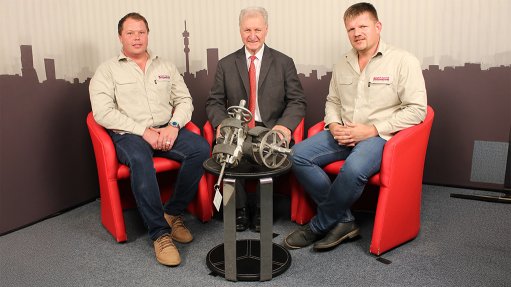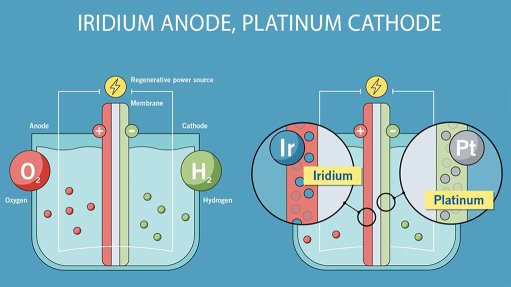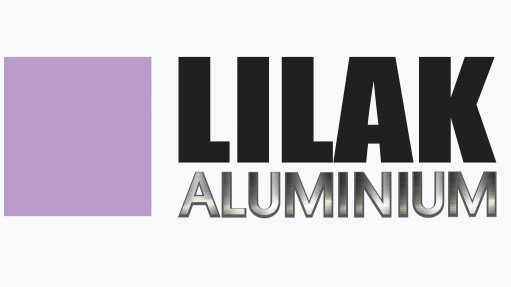New impetus needed if South Africa is to begin meeting R&D investment goals
In the drive for economic advancement and global competitiveness, innovation stands as a pivotal force, with the Organisation for Economic Cooperation and Development (OECD) highlighting that a modest single percentage point increase in research and development (R&D) spend can potentially elevate economic growth by about 0.13%. Yet, despite being Africa’s biggest and most developed economy, South Africa fails to make the grade as one of the world’s top R&D investors relative to GDP.
Crowned as the global top spender in the OECD’s latest rankings – for 2020 – is South Korea, which leads with an impressive R&D-to-GDP investment ratio of 4.8%. The US follows with 3.42%, while Japan and German trail closely behind with 3.27% and 3.14% respectively. Finland and China also feature prominently, with ratios of 2.91% and 2.41% respectively. Completing the top ten are France with 2.35%, Italy with 1.53%, Spain with 1.41% and Turkey with 1.09%.
As a percentage of GDP, South Africa’s expenditure on R&D – activities mostly associated with the development of radical innovations and/or patents – amounted to 0.6% in 2021/22, a far cry from the 1.5% aspiration in the National Development Plan, the nation’s economic blueprint to 2030.
Among emerging markets, Argentina closely mirrors South Africa’s performance, with an R&D-to-GDP expenditure ratio of 0.53% in 2020. In contrast, Czechia, Brazil and Malaysia outperformed South Africa, reporting ratios of 2%, 1.15% and 0.95% respectively for the same year.
Drawing comparisons with other African countries is no easy feat. Dr Nazeem Mustapha, chief research specialist at the Human Sciences Research Council’s (HSRC’s) Centre for Science, Technology and Innovation Indicators (CeSTII), highlights that only six countries on the continent regularly collect R&D data across all the five institutional sectors crucial in evaluating national R&D expenditure: business, government, higher education, not-for-profit organisations and science councils.
Of these few African countries that South Africa can be compared with, Rwanda and Tunisia have the closest R&D investment intensities, at 0.69% of GDP in 2018/19 and 0.6% in 2018 respectively. Egypt surpasses these countries, with an R&D investment intensity of 0.96% of GDP in 2020.
Mustapha says of the remaining African countries that regularly collect data for all the five institutional R&D sectors: “Malawi and Mali have very small R&D intensities, and Mauritius is a very small country.”
Private Decline
He notes that while private-sector funding dominated South Africa’s R&D landscape before 2007, the public sector now leads, contributing 53% of the total, compared with the private sector’s 29%, foreign funders’ 15% and 4% from various other sources.
As Forestry South Africa (FSA) research and protection director Dr Ronald Heath observes, the decline in private-sector funding began with the global financial crisis in 2008. “Since then, private-sector investment in R&D has understandably decreased and has, unfortunately, not been able to recover to date,” he tells Engineering News & Mining Weekly.
Elaborating on the link between economic fortunes and private-sector R&D investment intensity, Mustapha notes: “Businesses tend to suspend activities such as R&D and marketing in times of slow economic growth. Additionally, R&D is a rare and expensive activity that is more likely to be found in large firms, including multinationals, and in typical sectors such as pharmaceuticals, biotech, information and communication technology, healthcare and medical devices, and so on.
“It appears from the data that we have fallen off in areas of previous strength, such as healthcare and medical devices, but there are suggestions that we are also growing in newer sectors.”
The decline in private-sector R&D investment in South Africa has not been universal, however, with the forestry sector standing out as a significant exception. “For [this] sector, it is important to note that our private-sector investment did not decrease during the 2008 crisis but continued to grow in line with the Consumer Price Index,” notes Heath. “In the forestry sector, the private sector is contributing approximately 85% of the R&D funding, compared with the 15% funding received from the public sector. With this in mind, the forestry sector is still investing 1.65% of its GDP in forest R&D.”
While substantial private-sector R&D investment is vital, Mustapha argues that for sustainable, knowledge-enabled economic growth, countries should complement their high private-sector funding with other crucial factors, such as a strong researcher- to-population ratio and diversified high-tech exports.
To illustrate this point, he cites Malaysia, where R&D investment intensity was 1.4% of GDP in 2017, supported by business-sector investment of more than half the total expenditure. By 2020, this intensity had declined to 0.95% of GDP. The country’s R&D activities and high-tech exports are dominated by one large firm.
In contrast, Czechia maintains a high researcher-to-population ratio and invests more than 1% of its GDP in R&D, while also sustaining strong export volumes. “This indicates that Czechia’s export performance is characterised by a strong presence across a diverse range of products,” says Mustapha.
Slight Uptick
While the South African private sector’s share of R&D expenditure has continued to be overshadowed by the public sector’s contribution for more than one-and-a-half decades, the latest National Survey on Research and Experimental Development, released in February and covering the 2021/22 financial year, showed an uptick in overall expenditure for the first time in three years, reaching R27.76-billion in constant 2015 prices.
According to Mustapha, further increases in public-sector R&D funding will hinge on government income, priorities and budget allocations. However, some experts, including CeSTII executive director Dr Glenda Kruss, believe that funding from this source might be nearing its limit. Speaking at a forum in March jointly hosted by the HSRC, the Department of Science and Innovation (DSI) and Business Unity South Africa (Busa), Kruss highlighted the need to boost business’s contribution in order to grow R&D investment as a whole.
Mustapha concurs but emphasises that elevating public-sector expenditure from current levels is crucial for subsidising the costs associated with private-sector take-up and commercialisation of R&D. “Only increased funding by both sectors will allow for the target of 1.5% of GDP to be reached,” he asserts.
To this end, the South African government has long funded private-sector R&D investment mainly through two mechanisms, a co-funding or matching funding model applied by mainly the DSI and its implementing agencies as well as by the Department of Trade, Industry and Competition (dtic), and a tax incentive.
Under the co-funding model, government provides matching funds to various sectors on a competitive basis. “In most instances, this needs to be new private-sector funding, and has shown to be very successful,” says Heath. “An excellent example would be the Sector Innovation Fund (SIF) of the DSI, which is in its ninth year and has not only proved to be an effective model but, in addition to incentivising private-sector investment, has ensured that research addresses national imperatives and industry priorities.”
However, Heath warns that the continuation and sustainability of the SIF are at risk owing to budgetary constraints. Describing this fund as a flagship programme that has performed above expectations and made a significant impact, he urges government to show political will and ensure its continuation.
The R&D tax incentive, meanwhile, allows companies undertaking scientific and/or technological R&D in the country to deduct 150% of their R&D spending when determining their taxable income. Available to companies of all sizes and across all sectors, this incentive effectively translates to a benefit of about 14c for every rand spent on R&D.
Although Heath lauds the tax incentive as “an excellent incentive initiated by the DSI”, he laments its limited uptake in the forestry sector, attributing this to administratively cumbersome processes that either require specialised internal capacity or the engagement of external experts at a cost.
“Our members that have made use of this incentive have expressed some challenges in what is ‘defined’ as research under the incentive and lack of alignment or coordination between the DSI and the South African Revenue Service.”
Some incentives for private-sector R&D investment flow through the dtic, with a foremost example being the Technology and Human Resources for Industry Programme (THRIP), which was moved to the department a few years ago.
“We welcomed it when the dtic took the approach to work through industry associations rather than research institutions, as this facilitated research funded by the THRIP initiative to address industry priorities that would serve the common goal of all role-players within a specific industry,” says Health.
“For FSA, this is very important, as our sector research strategy ensures our collectively funded research bears value for all our members – from the multinationals, the corporates, the private timber farmers to our extensive network of small growers.”
However, there has been growing frustration with the current administrative model for the incentive. The main issue is that it places a heavy burden on researchers and administrators alike, demanding meticulous accounting to the last cent.
Heath elucidates: “Anybody who has been involved in research programmes would understand how costs fluctuate due to dependence on imported consumables, the need to pivot a research project due to unexpected results or findings and the effect of multiple projects being run in one laboratory.
“To give an example, to save costs, our research partners purchase consumables in bulk, and these costs are then internally allocated to specific project cost centres. The internal cost allocation process does not generate an invoice and therefore the researcher cannot claim the expenditure from THRIP, as the dtic requires proof of payment for every cent.”
Moreover, each milestone claim – of which there are two a year – must undergo a due diligence process before approval. This process includes site visits or meetings with presentations. Additionally, required documents, such as registration certificates, black economic empowerment certificates and yearly financial statements, as well as project-related documents, must be submitted by email.
“Due to the size of the documents, it has in the past taken us more than eight individual emails to submit all the documents,” says Heath.
“We fully support good governance and responsible financial management, but we believe this can still be achieved while streamlining the process and making it more research friendly. This could be achieved by considering inter-departmental discussion and the establishment of national best practices with regard to public R&D funding.”
Cumbersome Processes
Concerns about the cumbersome processes for accessing R&D incentives were also raised at the joint forum in March, with outgoing Busa CEO Cas Coovadia observing that the complicated procedures sometimes lead potential applicants to question whether the effort is worthwhile.
It was not all doom and gloom, however. Presidential Climate Commission executive director Dr Crispian Olver told attendees that there are several areas of R&D competence in South Africa that could serve as a foundation on which to build new strategies. He specifically highlighted the country’s robust capabilities in atmospheric sciences.
Olver proposed that net-zero technology centres could play a pivotal role as collaboration hubs, bringing together government, business and universities to drive the transition to a low-carbon future.
Article Enquiry
Email Article
Save Article
Feedback
To advertise email advertising@creamermedia.co.za or click here
Comments
Press Office
Announcements
What's On
Subscribe to improve your user experience...
Option 1 (equivalent of R125 a month):
Receive a weekly copy of Creamer Media's Engineering News & Mining Weekly magazine
(print copy for those in South Africa and e-magazine for those outside of South Africa)
Receive daily email newsletters
Access to full search results
Access archive of magazine back copies
Access to Projects in Progress
Access to ONE Research Report of your choice in PDF format
Option 2 (equivalent of R375 a month):
All benefits from Option 1
PLUS
Access to Creamer Media's Research Channel Africa for ALL Research Reports, in PDF format, on various industrial and mining sectors
including Electricity; Water; Energy Transition; Hydrogen; Roads, Rail and Ports; Coal; Gold; Platinum; Battery Metals; etc.
Already a subscriber?
Forgotten your password?
Receive weekly copy of Creamer Media's Engineering News & Mining Weekly magazine (print copy for those in South Africa and e-magazine for those outside of South Africa)
➕
Recieve daily email newsletters
➕
Access to full search results
➕
Access archive of magazine back copies
➕
Access to Projects in Progress
➕
Access to ONE Research Report of your choice in PDF format
RESEARCH CHANNEL AFRICA
R4500 (equivalent of R375 a month)
SUBSCRIBEAll benefits from Option 1
➕
Access to Creamer Media's Research Channel Africa for ALL Research Reports on various industrial and mining sectors, in PDF format, including on:
Electricity
➕
Water
➕
Energy Transition
➕
Hydrogen
➕
Roads, Rail and Ports
➕
Coal
➕
Gold
➕
Platinum
➕
Battery Metals
➕
etc.
Receive all benefits from Option 1 or Option 2 delivered to numerous people at your company
➕
Multiple User names and Passwords for simultaneous log-ins
➕
Intranet integration access to all in your organisation





















